Spirits of Australia: local distillers raising the bar
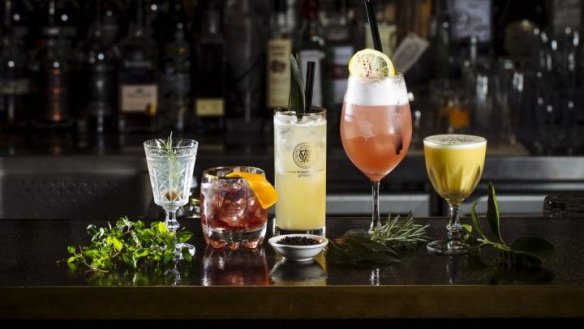
Australian spirit levels are rising. Every time you pull up a bar stool, you'll likely encounter a bartender hawking another new and local craft gin, usually with tales of how it was made in a still of Coober Pedy copper and infused with pepperberries picked by the ghost of Banjo Paterson. Or if not a gin, then maybe a Tasmanian whisky that's been cleaning up on the international awards circuit, an Aussie vodka with a sexy label or a rum so dangerous it makes the Man from Snowy River look like Mulga Bill.
Local distilleries like Four Pillars, Archie Rose, Sullivans Cove, West Winds and Starward are enjoying a splendid time in the sun, but those guys are only the tip of the Aussie spirit iceberg, which now has more than 50 distilleries, far more than the handful that existed in the mid-nineties, when Bill Lark (Lark Distillery) and Spike Dessert III (Ord's River Rum) created legal and technical precedents for the modern age of Australian distilling.
And thanks to the hard work (and social media accounts) of wholesalers like Nip of Courage, and local spirit-focused bars such as Bad Frankie in Melbourne and The Cotton Thief in Cremorne, it's becoming much easier to find Australian hooch in bottle shops and boozers. However, commentators close to the industry say it will be a long time before we start seeing $5 house pours from Melbourne Gin Company at the local bowling club.
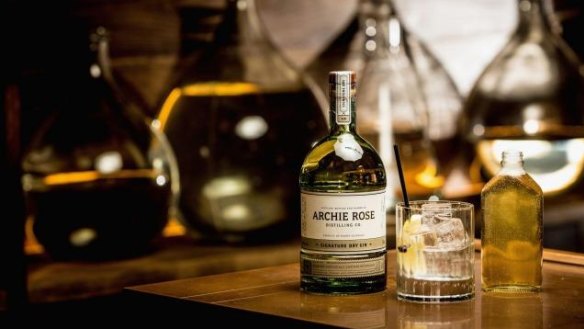
Jason Crawley is managing director of The Drink Cabinet, a specialist agency involved in everything from running high-end cocktail events to working on strategy with major spirit brands. He is a man you can trust to make a martini.
"These local spirit brands are literally 2 per cent of the market," says Crawley. "Even though they're very active on social media, and at influential bars around the city, when you start to look at the commercial scale of things they don't really exist compared to the giants like Bacardi and Diageo. The Australian spirit industry is very much in a birthing stage."
One inhibitor of industry growth is a spirit tax rate that's one of the highest of any jurisdictions in the world. The federal government currently takes more than $1 in excise from every standard drink of Australian spirits sold by manufacturers. In the US it's closer to 10c.
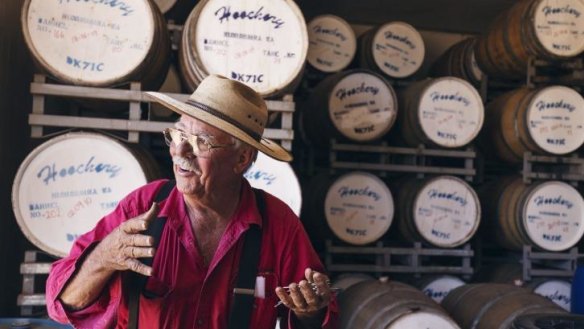
"It's a tremendous time for distilling in Australia, in cities, regional and rural areas," says Stuart Gregor, co-founder of Four Pillars gin and president of the Australian Distillers Association (ADA). "If we can fix the ridiculous taxation structure, and the government can get out of our way, we can build a really sustainable, profitable and excellent industry. An industry employing a lot of great people, showcasing how great Australia can be at craft distilling."
Gregor and ADA have submitted a white paper for spirit-tax reform. In the meantime, Crawley says Australian craft distillers still have every chance at success on the domestic and global market if they can get their shot glasses in a proper line.
"If the liquid's good enough then anything can happen. If you've got a good brand, a good story and someone with a bit of profile behind it, then you've got a good chance of succeeding. What local craft distillers also have up their sleeve is the myth of Australia. Not everyone has been here and you can tell the story about the bush and its flavours like lemon myrtle, quandong and pepperberry."
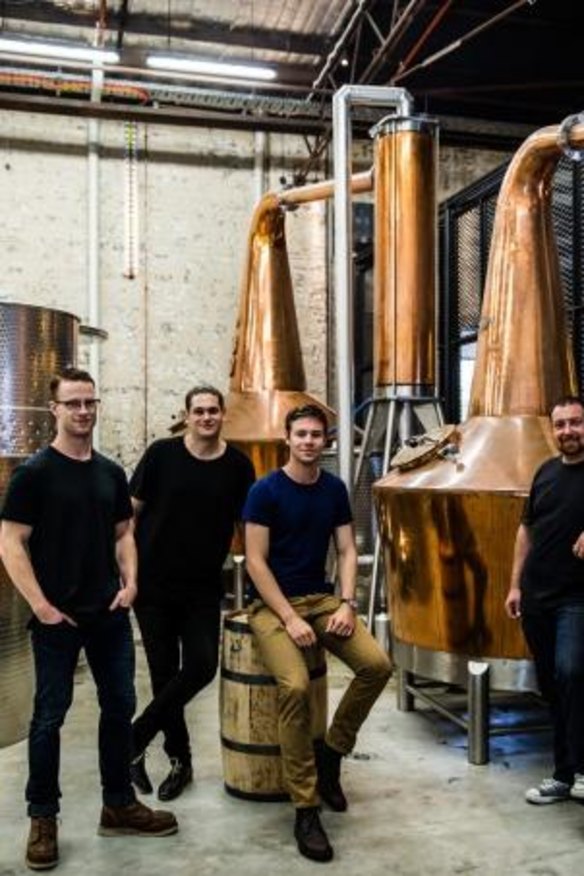
Gin
One brand making big waves is Four Pillars, established in 2013 in the Yarra Valley.
"We just had our best month ever in the domestic market and international sales are great," says Gregor. "We're currently in New Zealand, the UK, Ireland, Singapore and Hong Kong. China sales are growing fast, Denmark is terrific and we have plans to be in the US and mainland Europe next year."
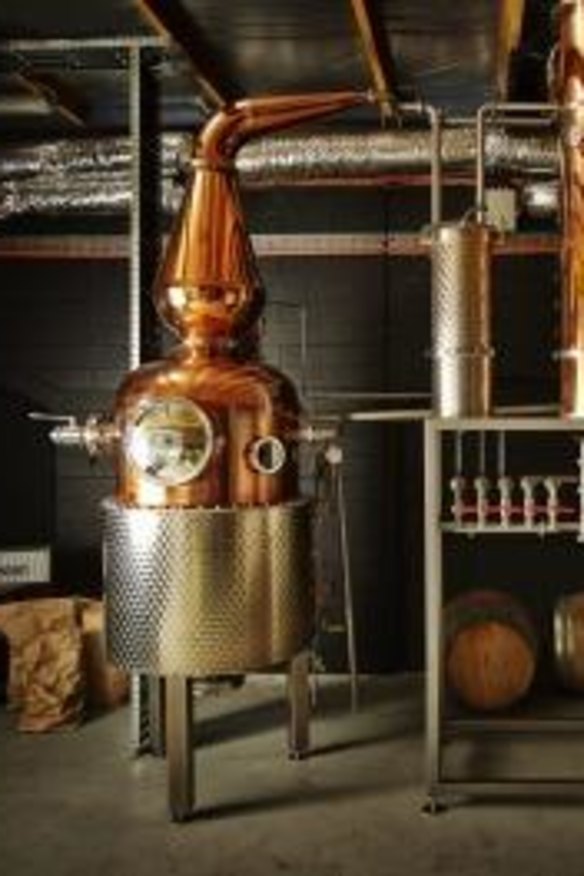
It now seems everyone with a copper pot and some quandongs is putting a gin on the market. Even Sydney beer brewers Young Henrys has got in on the act, and launched their Noble Cut gin in March this year. Young Henrys, like many other Australian gin distillers, also added native flavours to their spirit. Along with classic botanicals like juniper, coriander and cassia bark, there's also pepperberry and bush tomato.
Australia can also lay claim to its first certified organic gin, thanks to Adelaide's Shane Reid and Rory Grafton, who put Antipodes Gin on the market in August.
"It was such a full-on process to get the certification," says Reid, a commercial photographer by trade. "We had to whip out the fine-tooth comb for a lot of the places we source our raw product from. The small provider we get our Tasmanian pepperberry from, for example, had to perform a massive audit to prove many different things about the way they do business. But it was worth it in the end and we became certified in July."
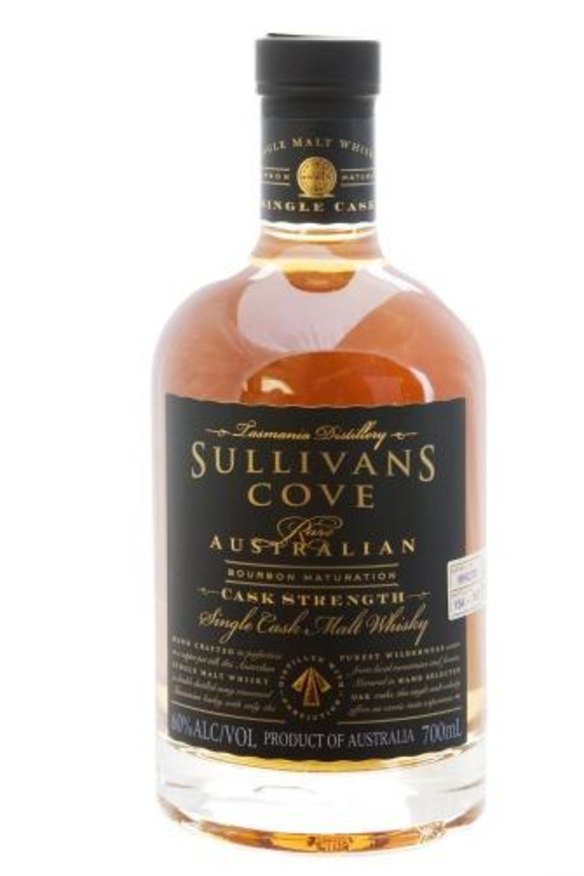
Reid says he hasn't had too much trouble putting Antipodes gin on the shelves. "Every time I talk to someone they're instantly like, 'Yep. It's Australian; it's organic; it's gin. I want it now'."
Gin's popularity has a lot to do with its versatility.
"It's like a blank canvas," says Crawley. "The bottom line is that it's white, it's mixable, and it's finally moved away from the myth of it being a depressant, which was inherited in the 1970s, when everyone used to think of it as mother's ruin."
Five to try: Archie Rose (NSW), West Winds (WA), Four Pillars (Vic), Kangaroo Island Spirits (SA), McHenry and Sons (Tas).
Whisky
Sullivans Cove is the second Tasmanian whisky distillery of the modern era, kicking off in 1994. It's situated about 15 minutes' drive from Hobart and five minutes' drive from Lark Distillery. In 2014, its French oak whisky took home the gong for the world's best single malt at the World Whiskies Awards.
"Australian whisky exploded when we won that award," says Bert Cason, Sullivans Cove sales and marketing manager. "It's probably the biggest thing that's ever happened for the local whisky industry. Just the fact that one of us won it meant that everybody around the world started talking about Tasmanian whisky."
Cason says there is a very strong sense of collaboration and community among Tasmanian distilleries, a group that also includes Nant, Overeem, Hellyers Road and Trapper's (there's also Belgrove Distillery rocking Australia's only aged rye whisky).
"Collaboration is how we've managed to get somewhere," he says. "The mindset is that growing the industry is far more important than growing your individual business. It's what the Scottish do extremely well; they market Scotch whisky first and their own brands second."
Tassie whisky is highly sought after stuff, and one problem the industry faces is that there's not enough stock to meet demand.
"It's an issue across the board," says Cason. "The extremely high demand obviously gives the brand kudos, but all of us have pulled out of our international markets quite heavily to make sure we can actually supply Australia properly. It's not the worst problem to have, you know, but we would like to pour a few more drinks overseas, too."
Five to try: Lark (Tas), Sullivans Cove (Tas), Starward (Vic), Bakery Hill (Vic), Smith's Angaston (SA).
Rum
You've probably heard of a little sugar cane distillery in the far north Queensland town of Bundaberg, but there's more to Australian rum than polar bears and premix cans.
The Hoochery is located in Kununurra, Western Australia, about 3500 kilometres from Perth. On a clear day its founder, American-born Raymond "Spike" Dessert III, can see the Northern Territory hills from his office, which sits on poles like a house in the tropics.
The Hoochery's Ord River Rum has twice taken out champion rum at the Royal Melbourne Fine Food Awards – "The second win meant the first wasn't a fluke," says Dessert – and was awarded a gold medal at the 2015 International Spirits Challenge in the UK.
"The reason we make good rum isn't my skill, but that The Hoochery is situated in an ideal rum climate," says Dessert. "If you take your GPS and key in exactly 180 degrees to the other side of the world from Kununurra, you'll end up five kilometres from the north-east coast of Martinique [the Caribbean island famous for rum]. We have the right temperature, humidity and dirt for rum making."
Dessert doesn't have the same problems with lack of stock as the whisky distilleries of Tasmania. Partly because he only has the one aged rum; the rest don't have age statements and are blends of rums with different times on cask (although a minimum of two years in the barrel is required to label it rum) and partly because it is hotter in the Kimberley.
"Because of the warmer climate here, our spirits mature at a faster rate than Scotland or Tasmania," says Dessert. "Our maturing room has insulated walls, but no cooling, so in the middle of the wet season it gets up to 35 degrees inside. A 10-year-old rum from here is probably more like a 25-year-old Scotch, so I don't feel the need to age things any more than that. That, and I'm also too cheap to aircondition."
Dessert completed his first still in 1999. He paved the way for other rum distillers in Australia and there are now registered hoochers all over the country.
Five to try: Ord River (WA), Canefire (WA), Black Gate (NSW), Iridium (QLD), Southern Coast Distillers (SA).
Vodka
Australian vodka has every chance of becoming as popular as gin on the local craft spirit stage.
"It's easy to make; it's cost effective and from a marketing point of view it can be anything you want it to be, because there are no rules to production," says Crawley. "You can make it in any country, from anything you like, and as long as it's not f---ing poison, you can sell it. It's a marketer's dream."
One of the newest kids on the vodka block is Small Mouth, established in 2014 by two blokes in their twenties, Chris Payton and Rohan Rivett. The pair distil and bottle in Pokolbin, NSW, and their product is popping up with increased frequency in Australia's most popular bars.
"We initially thought about doing our own whisky," says Payton, who has a background in sales and marketing and was inspired to make his own spirit after visiting the distilleries of Scotland.
"However, when we looked into it a bit more seriously and saw that Tasmania was absolutely killing it in whisky, we said, 'Well, they've got that covered; we'll leave them to it'. We looked at what else we could do in the distilling space and vodka came about because it's one of those things a lot of people think, 'Oh, it's a boring, odourless spirit'. We thought we'd try to change that view."
Small Mouth vodka won't burn your throat like some of the Russian rocket fuel. It has a sweet, full-bodied nose and long, smooth, citrus finish; great in a dry martini with a twist. A 500 millilitre bottle retails for about $65 and Payton says that a competitive price is a challenge for them.
"There are so many massive brands in the vodka category and finding shelf space can be tricky – mass-produced imports are difficult to compete with. But consumers are continuing to get behind locally made products, including food, wine and beer, and I find more and more people are happy to pay a little extra cash for local spirits, too."
Five to try: 666 Pure (Tas), Smallmouth (Tas), Archie Rose (NSW), Red Dirt (NSW), Hippocampus (WA).
Cocktail craving? Try these local legends
Colonial Iced Tea at The Cotton Thief, Cremorne NSW: Archie Rose vodka, dry gin and white rye (NSW), Crazy Uncle Moonshine (WA), FNQ Platinum White Rum (QLD), cola, lemon, sugar.
Notorious F.I.G at Bad Frankie, Fitzroy, Vic: Firedrum vodka (Tas), St Agnes Brandy (SA), Distillery Botanica Koko Noir Chocolate Liqueur (NSW), fig jam.
Mr Rubens at A.Baker, Canberra ACT: 666 Vodka (Tas), Wild Brumby peach schnapps (NSW), passionfruit, lime, cloudy apple juice.
Island of Fire at IXL Bar, Hobart, Tas: Hellyers Road peated single-malt whisky (Tas), sugar, smoked bitters, cinnamon and orange rind.
Bang Bang Bang at Union Electric, Melbourne Vic: Starward Whisky (VIC), lemon, Amaro Nonino, Campari.
Newtown Calling at Earl's Juke Joint, Newtown NSW: Young Henry's Noble Cut gin (NSW), sherry, lemon juice, sugar.
Uncle Joe's Health Tonic at Helvetica, Perth WA: Crazy Uncle Moonshine (WA), Montenegro Amaro, lemon, orange, sugar, Regan's orange bitters.
